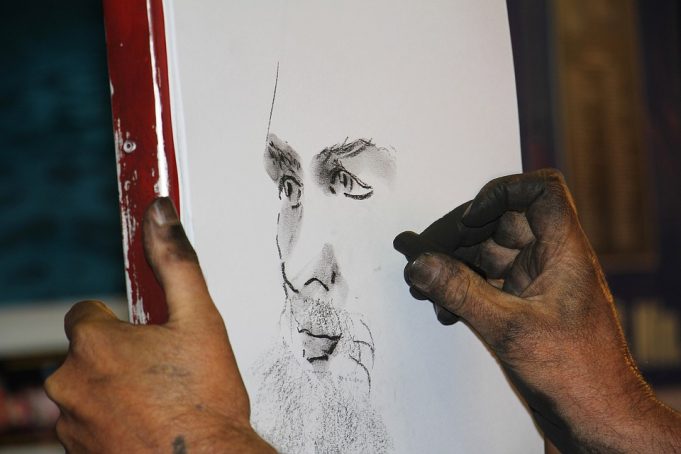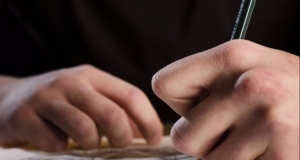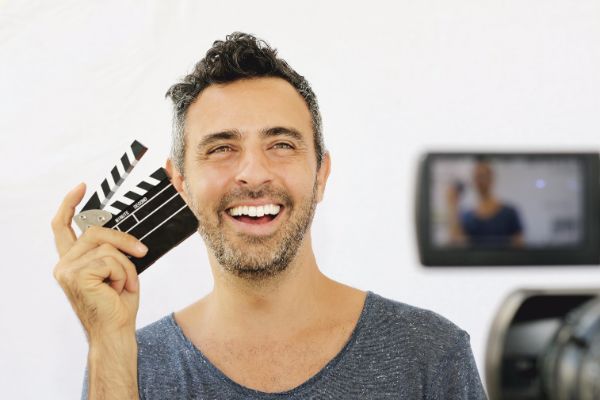1 – If at all possible, always draw from life and not photographs.
2 – When drawing, less is sometimes better. Do not attempt to draw every line and detail that you see or you will give your viewer too much information to absorb.
3 – Do not try and get all of the information in your drawing completed at one sitting. Drawing is a process. Layout the general idea of your drawing and then slowly add in your details.
4 – Do not be overly judgmental about your drawing before it is completed. This may cause you to become discouraged and give up.
5 – Do not take on subjects that are too complicated at first. This will certainly cause you to become discouraged if the drawing isn’t as good as you expected it to be. Start with simple subjects that you know you can complete and then progress to more complicated ones.
6 – Forget everything you already know about a particular subject before you start drawing it. Draw what you see in front of you and not what you know already about that subject.
7 – Make sure you have excellent lighting. Nothing is more frustrating to an artist than poor lighting. If you can’t see you can’t draw. If you do not have a well lit room with natural sunlight to work in, then check your local art supply store or search online for full spectrum lighting products that mimic natural sunlight.
8 – Get yourself a pad of newsprint paper. Its very cheap and great for practice and doing preliminary sketches.
9 – Keep your pencils sharp. There are drawing techniques that require a blunt pencil point , but for the most part, you should keep your pencil points sharpened.
10 – Vary the weight of your lines. You should keep a conscious effort to use a variety of different lines in your drawing by pressing harder or by lifting your pencil. This may seem like an obvious thing, but when an artist becomes deeply focused in a drawing, they can sometimes forget to use this simple technique.
11- Keep a sketchbook with you wherever you go. Whenever you have a free moment, practice your drawing. It doesn’t matter if the subject is a light post, an insect or a garbage pail. The more often you draw, the more observant you will become.
12 – Do not over use smudging and blending techniques to achieve values in your drawings.
13 – Never throw out any of your drawings. Keep a neat portfolio of everything you draw. This is an excellent way to see your progress over time.
14 – Avoid looking at your drawing too often. Make sure you are constantly focusing on the subject and only glancing at your drawing. By doing so, you won’t constantly judge your drawing, or think something is wrong or out of place. Focus on the subject and draw what you see.
15 – How to hold your drawing instrument – Hold your pencil in a way that is most comfortable for you. Some hold the pencil just as you would hold a pen or pencil if you were writing. Others hold a pencil with the pencil between the thumb and index finger, with the rest of the pencil resting under the palm of your hand. Whichever method you use for holding your pencil, make certain that you do not hold the pencil too tightly.
16 – Practice the contour drawing technique – This very basic technique is simply drawing the outline of your subject without any shading to indicate form.
17 – Practice the hatching technique – This drawing technique uses a series of parallel lines drawn close together, in the same direction, which gives the appearance of value.
18 – Practice tonal or value drawing – In this approach to drawing we are indicating the various changes of light and shade in our picture without the use of strong edges and lines.
19 – Practice the blind contour drawing technique – Similar to contour drawing, only you do not look at the paper. The point of this exercise is to force you to better observe what it is you are drawing. You should have no concern over the outcome of your drawing so it is important not to peek.
20 – Practice the upside down drawing technique – Drawing upside down is a wonderful exercise to awaken the right side of your brain. When you turn an image upside down, you are making it somewhat abstract and unrecognizable. This forces you to draw what you see as opposed to relying on your memory to draw something.
Ralph Serpe is an artist and webmaster of two fantastic websites for beginner artists. Follow the links that follow for more information: Follow this link now to learn how to improve your drawing with free lessons and tips at CreativeSpotlite.Com
Follow this link now to learn how to draw online at the Creative Spotlite Art Instruction Blog.
Article Source: Learn How to Draw – Top 20 Drawing Tips For Beginners




















